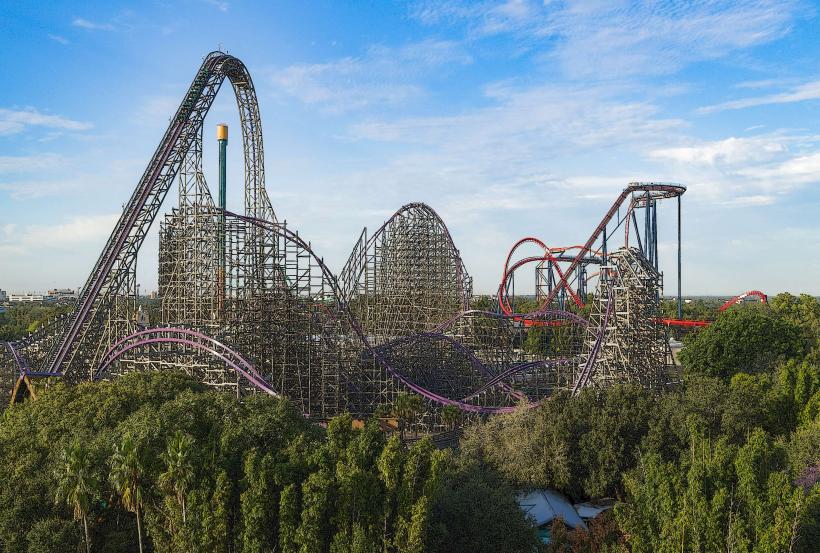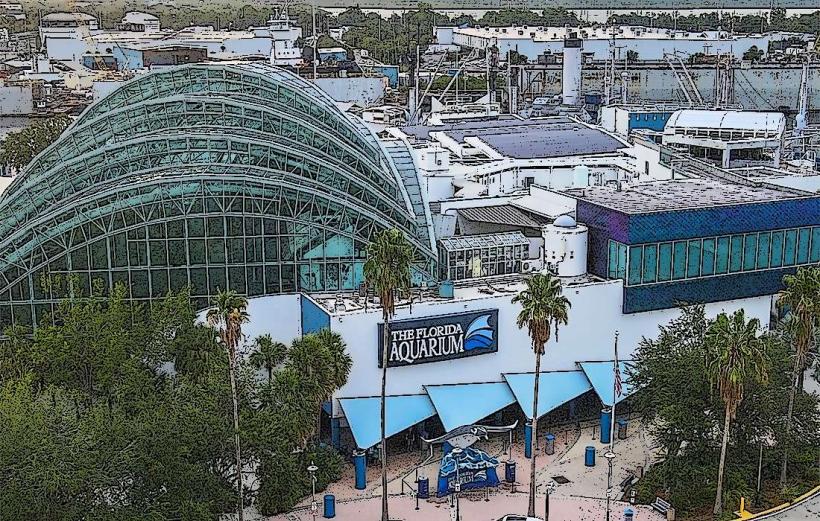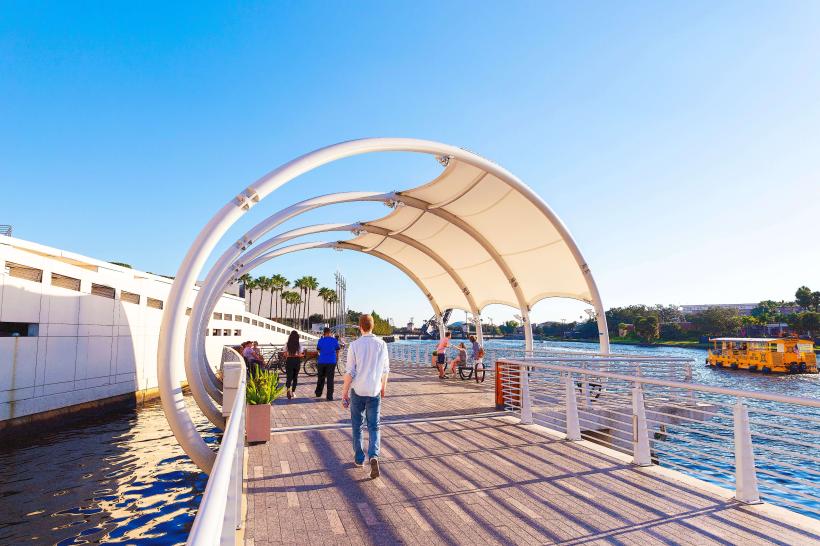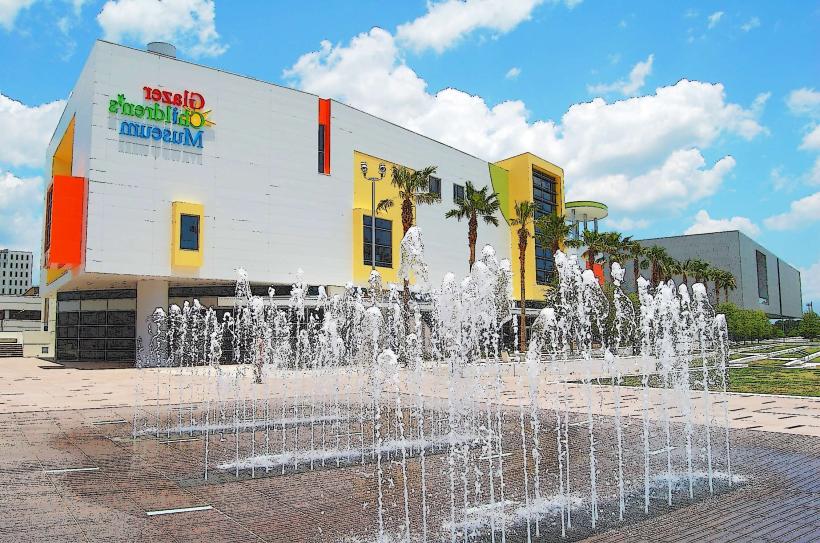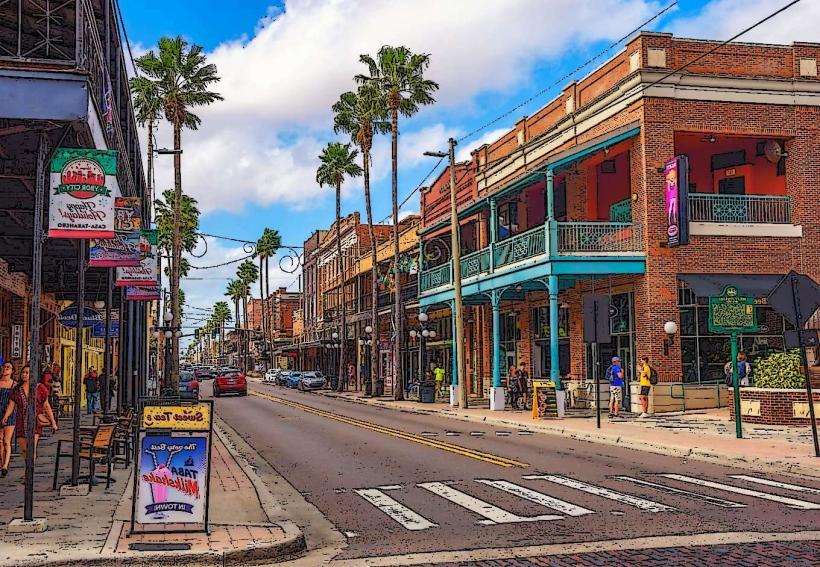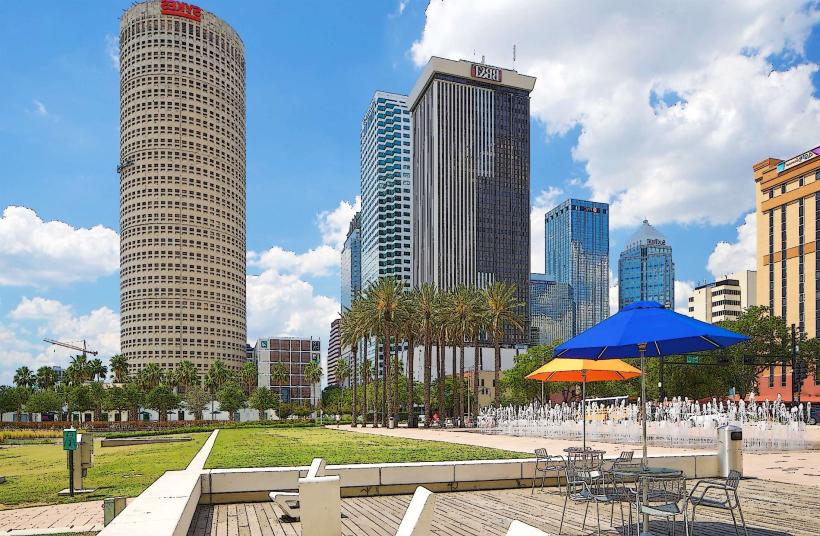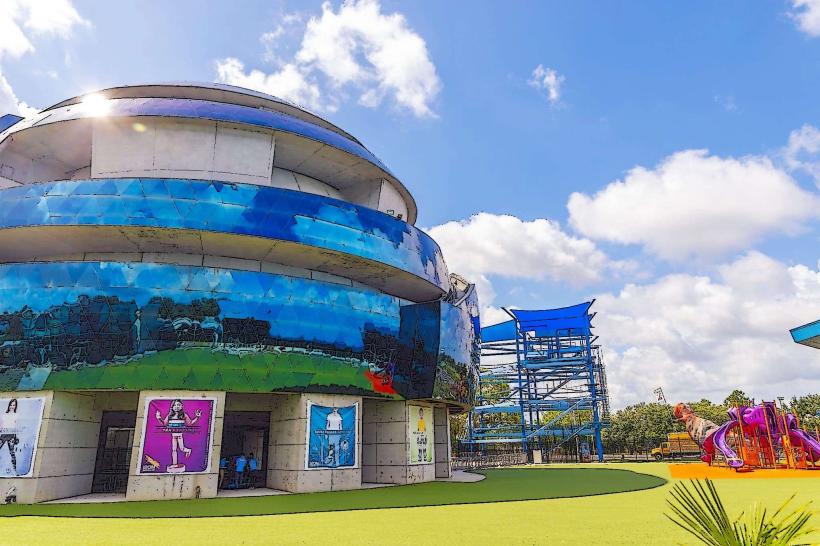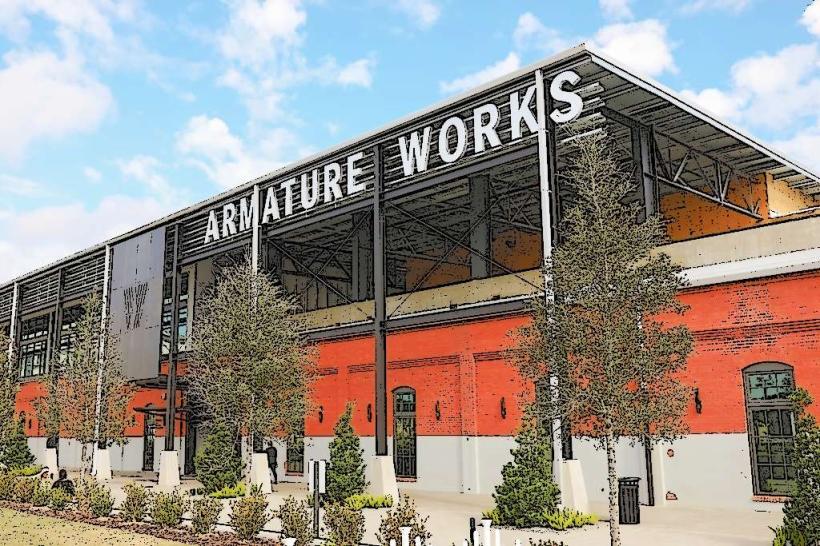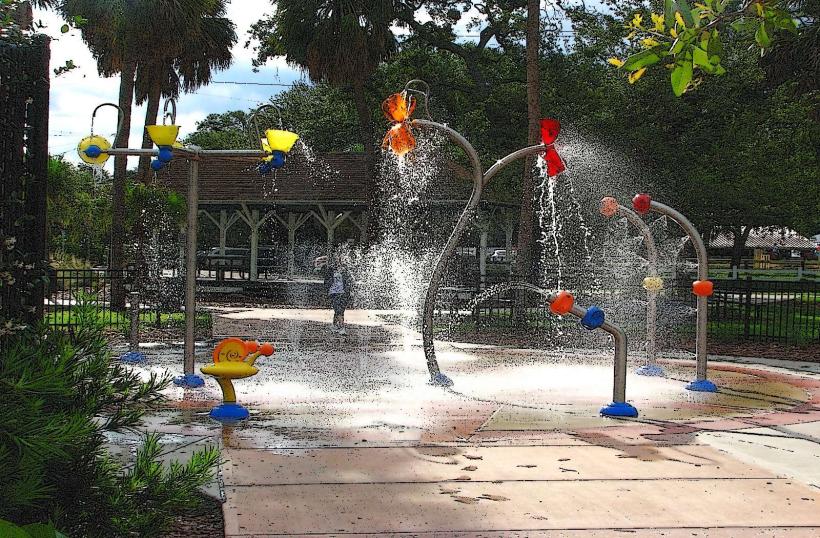Information
Landmark: Tampa Museum of ArtCity: Tampa
Country: USA Florida
Continent: North America
Tampa Museum of Art, Tampa, USA Florida, North America
The Tampa Museum of Art is one of the premier cultural institutions in Tampa, Florida. It offers a wide range of visual art exhibitions, educational programs, and community engagement. It has established itself as a cornerstone of Tampa's vibrant cultural scene, featuring an extensive collection that spans from ancient civilizations to contemporary artists.
History & Background
Founded in 1920, the Tampa Museum of Art began as a collection of art gifted to the city. The museum's collection grew over time, and it relocated to its current location in downtown Tampa in 2010. The building was designed by renowned architect Stanley Saitowitz and is a modern, striking structure made of perforated aluminum. Its unique exterior features fiber-optic lighting, which makes the museum a visually captivating landmark, particularly at night.
The museum is situated along the Hillsborough River, offering views of the water and downtown Tampa. It is part of the larger Curtis Hixon Waterfront Park and the Tampa Riverwalk, which connects several cultural institutions along the water, including the Glazer Children’s Museum and the Straz Center for the Performing Arts.
Architecture and Design
The Tampa Museum of Art is noted for its modern, minimalist architectural design, which blends well with the urban waterfront setting. The building's exterior is a luminous, light-filtering aluminum facade that creates a soft, glowing effect at night. Inside, the museum features expansive gallery spaces with natural light and spacious interiors, offering a welcoming environment for visitors to explore its collections.
The museum’s sleek, open design allows visitors to feel connected with the surrounding urban and natural environment. Its location along the Tampa Riverwalk further enhances the museum's position as a key part of Tampa's waterfront revitalization.
Collections
The museum is home to a rich and diverse collection of over 4,000 objects, which span a variety of time periods and art movements. Its collections can be broken down into the following key categories:
1. Greek and Roman Antiquities
The museum houses one of the largest collections of Greek and Roman antiquities in the southeastern United States. The collection includes more than 660 objects from ancient civilizations, such as Roman sculptures, Greek vases, Etruscan artifacts, and Egyptian works. These artifacts provide valuable insight into the daily lives, rituals, and art of ancient societies.
2. Modern and Contemporary Art
The museum's modern and contemporary collection includes works by prominent artists from the 20th and 21st centuries. Notable artists in the collection include:
Andy Warhol: Known for his influence on pop art, Warhol's works in the museum showcase his innovative approach to mass production and celebrity culture.
Alexander Calder: Famous for his kinetic sculptures and mobiles, Calder’s works are represented in the museum's collection.
James Rosenquist and Robert Rauschenberg: Both are notable figures in the Pop Art movement, and their works add depth to the museum's exploration of contemporary art.
Cindy Sherman: Known for her self-portrait photography, Sherman’s work explores identity and gender.
3. Sculpture
The museum has an impressive collection of sculpture, featuring both monumental works and smaller pieces. Some of the notable sculptors represented in the museum include:
Dale Chihuly: Renowned for his intricate and colorful glass sculptures, Chihuly’s works can be found throughout the museum.
Jaume Plensa: Known for his large-scale sculptures that incorporate human figures, Plensa’s works invite reflection on the body and identity.
Harry Bertoia: Famous for his sound sculptures and modern design, Bertoia’s works are featured as part of the museum’s collection of post-war sculpture.
4. Latin American Art
The museum has a significant collection of Latin American art, with works by well-known artists such as Diego Rivera, Rufino Tamayo, and José Bedia Valdés. This collection showcases the rich history and cultural diversity of Latin American art, offering visitors insight into the region’s artistic traditions and political history.
Educational Programs and Community Engagement
The Tampa Museum of Art is deeply committed to community engagement and education. It offers a variety of programs for all ages, including:
Art classes for children and adults in various media, including ceramics, painting, and digital arts.
Gallery tours and lectures that help visitors engage with the collections and temporary exhibitions.
Family programs, such as interactive exhibitions, art-making activities, and special events tailored to children.
Art access programs that offer reduced admission for students, seniors, and families.
The museum also collaborates with local schools, offering educational resources and experiences for students, providing an important cultural service to the community.
Renovation and Expansion
In recent years, the museum has undergone significant renovations to enhance the visitor experience and expand its programming. In 2023, the museum completed a $15 million renovation that added new galleries and educational spaces, including the Vinik Family Education Center. The expansion also allowed for additional gallery space to showcase modern and contemporary art.
In addition to the renovations, the museum has announced plans for a major $98 million expansion slated to break ground in 2025. The expansion will feature a crystalline, four-story structure along the waterfront, which will include:
A 150-seat auditorium for lectures, films, and performances.
Event spaces for private gatherings and cultural events.
A rooftop terrace with views of the waterfront.
The expansion is designed to further enhance the museum’s role as a leading cultural institution in Tampa and provide more opportunities for engagement and education.
Visitor Information
Location: 120 W Gasparilla Plaza, Tampa, FL 33602
Hours:
Tuesday to Sunday: 10:00 AM - 5:00 PM
Closed on Mondays and major holidays.
Admission:
General Admission: $15 for adults, $10 for seniors and students, free for children under 6, and free for museum members.
Special exhibitions may have additional fees.
Parking: Several parking options are available nearby, including the William F. Poe Parking Garage and street parking.
Public Transit: The museum is accessible via HART Bus routes and the TECO Line Streetcar.
Why Visit the Tampa Museum of Art?
The Tampa Museum of Art is a must-visit for anyone interested in exploring art and culture in the Tampa Bay area. It provides a dynamic and diverse collection that spans a variety of time periods, styles, and movements, offering something for every visitor. Whether you are a fan of ancient artifacts, modern sculpture, or contemporary photography, the museum's exhibitions are sure to captivate.
The museum’s commitment to education and community engagement further enhances its value, making it an important cultural resource in Tampa. Its stunning location along the Hillsborough River, adjacent to the waterfront park and the Tampa Riverwalk, provides a scenic and inviting atmosphere for visitors to explore both the city and its vibrant art scene.

